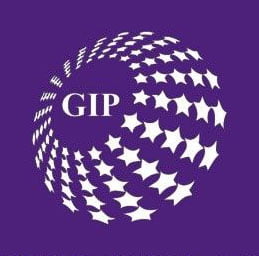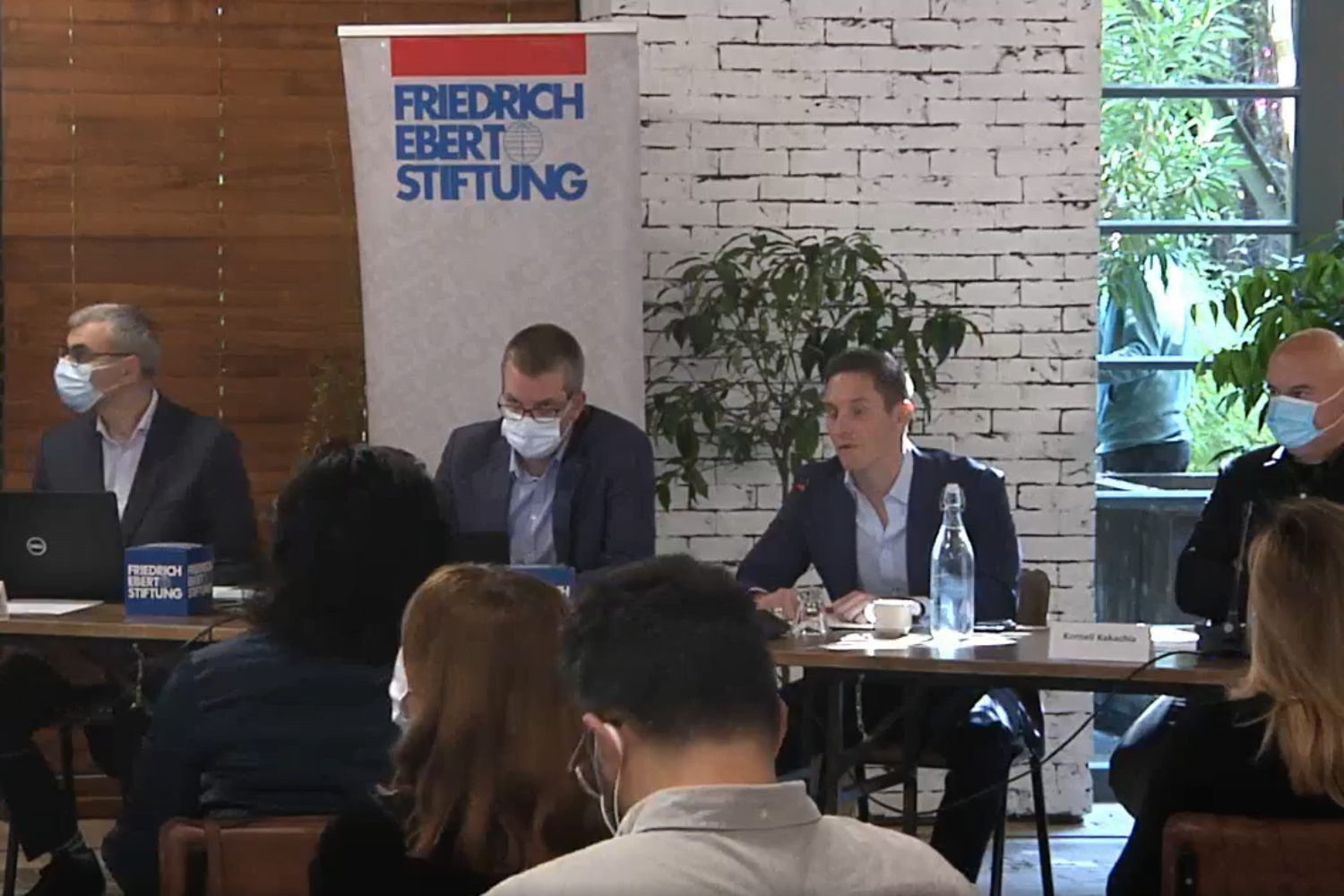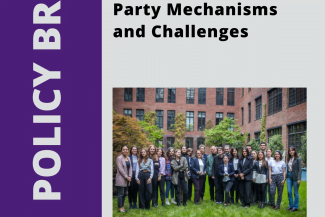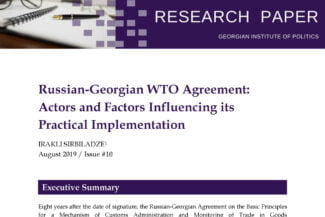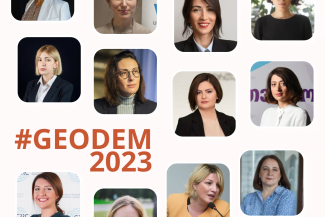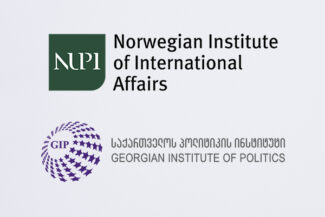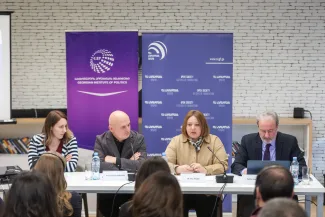On October 21, 2021, the Director of Georgian Institute of Politics (GIP) Prof. Kornely Kakachia participated in the presentation of the study “Georgia’s Political Landscape: Diversity, Convergence and Empty Spots” hosted by Friedrich-Ebert-Stiftung Georgia and based on data of “Election Compass Georgia 2020”.
GIP Policy analyst Levan Kakhishvili co-authored the study, together with Davit Keshelava (ISET-Policy Institute), Giorgi Papava (ISET-Policy Institute) and Davit Sichinava (CRRC Georgia).
Main Findings:
- On Georgia’s Political Compass, most parties are either left-wing and culturally conservative or liberal and right-wing. This means that in the two-dimensional ideological field used in this study, two ideological vacuums exist: Liberal Left and Conservative Right. In other words: Voters that hold values that place them in these areas are under-represented in Georgian politics.
- A majority of the Georgian electorate is in favor of minimum wage regulation, prefers voluntary participation in the cumulative pension system, advocates higher taxes for businesses that pollute the environment, and have clear and strong pro-Western and pro-EU preferences.
- The potential voters of the United National Movement seem to be more liberal and economically leftist, while the party itself favors right-wing economic policies: 94.2% of UNM voters have more left-wing views than the UNM itself, and 91.5% of UNM voters have a more conservative ideology than the party. The winning party in the 2020 elections, the Georgian Dream, is also the party that is closest to the “average”, or the median voter. Data used in this report does not confirm the existence of extreme polarization in Georgia. If we consider the two largest political parties – GD and UNM – the data shows that out of 30 policy issues, these two parties have the same position on half of them. This cannot be considered to be a sign of extreme political polarization. Additionally, voter preferences do not suggest the existence of two clearly identifiable societal groups that would have mutually exclusive preferences.
The project was supported by the United States Agency for International Development, the German political foundations, and the Kingdom of the Netherlands, and implemented by the Eastern European Center for Multiparty Democracy (EECMD), Friedrich-Ebert-Stiftung, the Friedrich Naumann Foundation for Freedom, the Heinrich-Böll-Stiftung, the Konrad-Adenauer-Stiftung and the International Republican Institute (IRI). Methodological expertise and IT security are provided by Kieskompas, a company specialized in Voting Advice Applications based at the Vrije Universiteit Amsterdam.
Please find the study here – “Georgia’s Political Landscape: Diversity, Convergence and Empty Spots”
